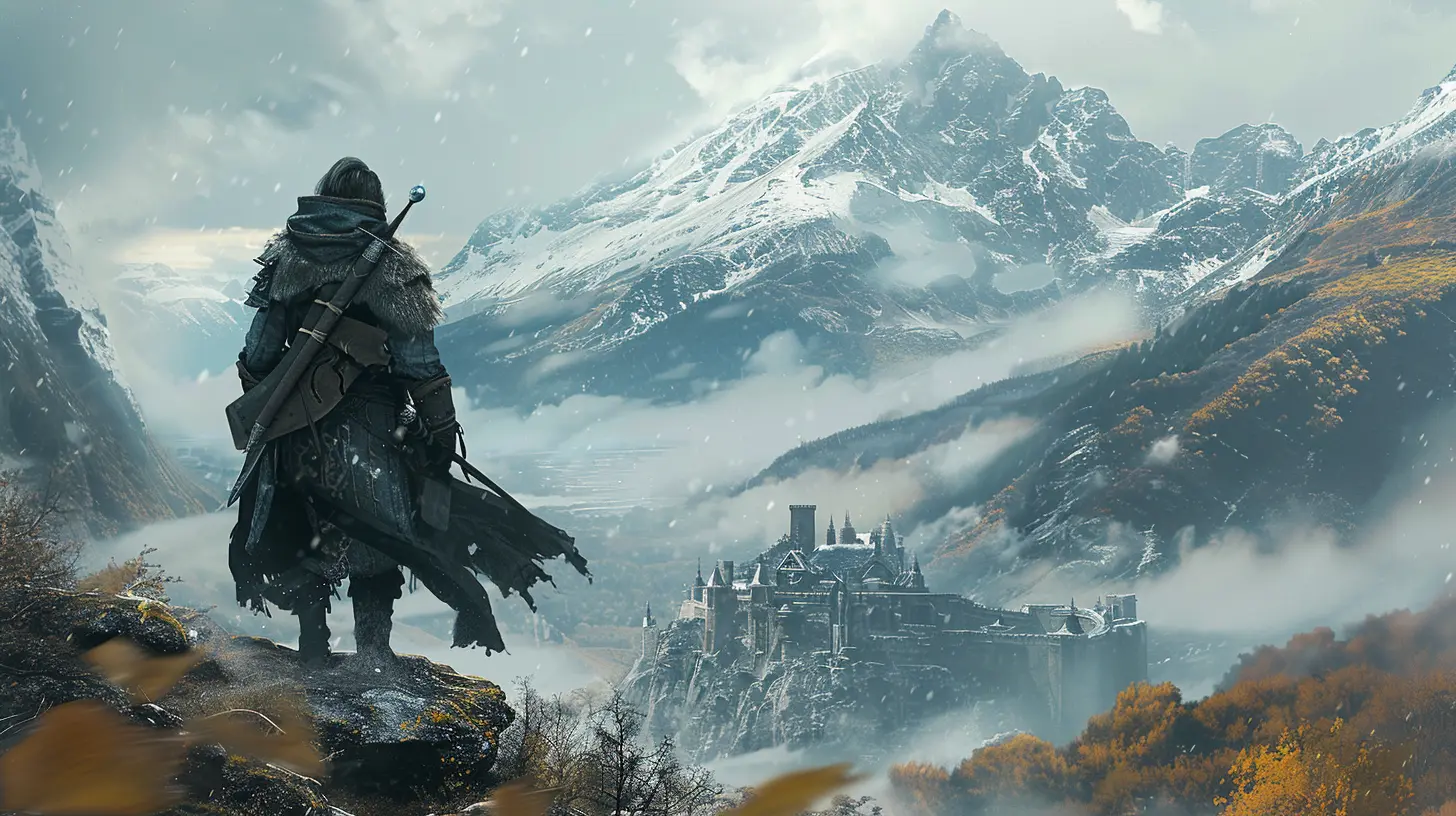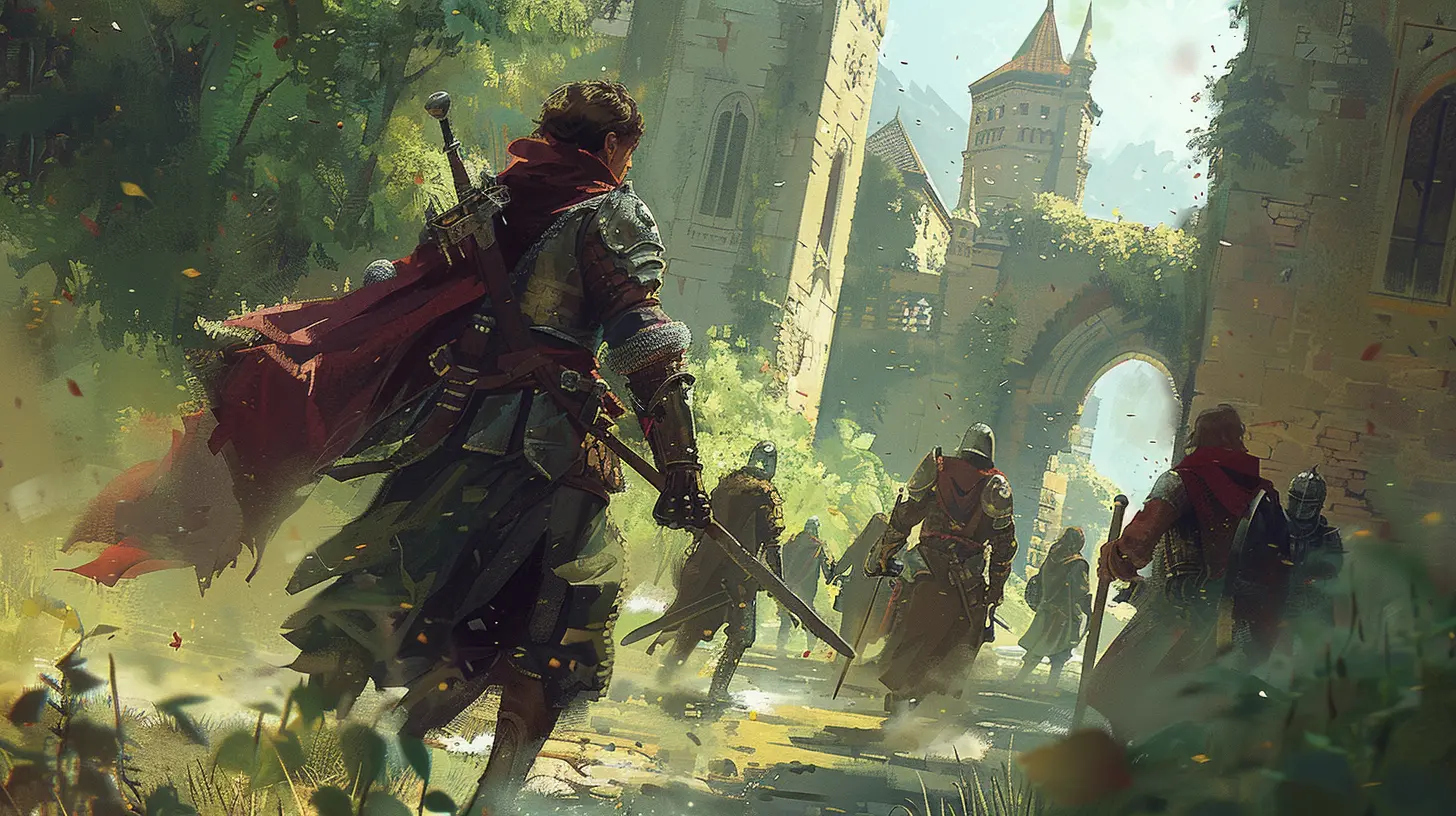12 February 2025
Adventure games have long been a beloved genre for gamers, offering a mix of exploration, storytelling, problem-solving, and often, action-packed combat. However, not all players are the same. Some thrive on the adrenaline-pumping battles, while others relish the quiet satisfaction of cracking a particularly tricky puzzle. Balancing these two elements—combat and puzzle-solving—is key to creating a game that feels engaging, accessible, and, most importantly, fun.
In this article, we’ll break down practical strategies for achieving harmony between these elements. Whether you're a game designer looking for tips or a gamer curious about what makes your favorite games tick, stick around. Let's dive in!
Why Balance Matters
Let’s face it: not everyone is in it for the same reasons. If an adventure game leans too much into combat, it risks alienating players who are there to exercise their brains. Conversely, if it's all puzzles, the thrill-seekers might tune out.Think of a great adventure game as a perfectly seasoned dish. Too much salt (combat) or too much sugar (puzzles), and the taste is off. The best games let players experience both the rush of victory in battle and the satisfaction of connecting the dots in a puzzle.
But how do you make that happen? Let’s break it down.
The Art of Pacing
1. Alternate Between Action and Downtime
A great way to balance combat and puzzles is to space them out thoughtfully. Players need those adrenaline spikes from combat, but they also need some downtime to catch their breath and engage their brains. For example, intense fight sequences might be followed by a serene exploration area with puzzles to solve.It’s like a rollercoaster—peaks followed by valleys. That ebb and flow keep players engaged. Imagine how exhausting it would be if the entire ride was one long uphill climb!
2. Adjust Based on Difficulty
Pacing also means recognizing when players need a break. If a combat sequence is particularly brutal, throw in a simpler puzzle to give them a breather. On the flip side, after solving a brain-meltingly hard puzzle, combat can be a great way to shake off the mental load.Think about games like Tomb Raider, which often alternate between action-packed combat arenas and slower-paced puzzle tombs. This balance keeps things fresh and engaging.
Designing Complementary Combat and Puzzles
1. Make the Puzzle Solving Impact the Combat
One of the best ways to blend these two elements is to have them influence each other. For instance, players might need to solve a puzzle to disable a trap system before stepping into combat. Or perhaps solving a puzzle grants a new weapon or ability that’s critical for defeating a tough boss.This technique creates interdependence and avoids making puzzles and combat feel like entirely separate chunks of the game. They’re two sides of the same coin.
2. Use Environmental Storytelling to Seamlessly Blend Both
Environmental storytelling can create puzzles that naturally tie into combat scenarios. Imagine a fort filled with traps and enemy guards. Players may need to solve puzzles to unlock doors or manipulate the environment, all while avoiding detection or fighting off enemies. This type of design ensures the puzzle-solving doesn’t feel like an afterthought but rather an integral part of the game.A great example of this approach is The Legend of Zelda series, where players often solve environmental puzzles to discover new pathways, treasure, or combat opportunities.
3. Allow Player Choice
Let’s be real: some players are puzzle people, and others just want to fight. Why not cater to both? Offer multiple ways to approach the same scenario. For instance, players might choose between solving a series of puzzles to sneak past enemies or going in swords blazing. This not only accommodates different playstyles but also increases replayability.The Deus Ex series does a fantastic job of giving players this kind of flexibility. You want to hack your way through or shoot your way out? Totally up to you.
Engaging the Player Through Challenge
1. Mix Up the Puzzle Types
Nobody wants to do the same type of puzzle over and over. Variety is the spice of life, after all! Mix things up with riddles, pattern recognition, physical manipulation puzzles, and logic-based challenges. When puzzles feel repetitive, players might get bored or frustrated.Diverse puzzles also prevent a game from feeling like a giant combat level interspersed with the same old "move-the-block" mechanic. Portal excels at this—it keeps players on their toes with puzzles that challenge different types of thinking.
2. Make Combat Strategic
On the flip side, make combat sequences just as engaging by adding layers of complexity. Instead of button-mashing or spamming attacks, include enemies with unique weaknesses. Maybe players need to analyze the foe’s behavior or environment (essentially solving a puzzle) to defeat them.Remember Shadow of the Colossus? The game did this beautifully. Each boss fight was essentially its own puzzle, requiring players to think creatively about how to bring these towering giants down.
Leveraging Narrative to Tie It All Together
1. Embed Combat and Puzzles in the Story
The best games integrate both puzzles and combat into the narrative. When these elements serve the story, players are less likely to see them as arbitrary chores.Take Uncharted, for instance. Nathan Drake doesn’t just solve puzzles or engage in combat for the sake of it—it’s all tied to the overarching treasure hunt and unfolding story. Each puzzle or fight feels purposeful, not like it was just tossed in to pad gameplay hours.
2. Reward Players for Both Skills
When players feel rewarded for taking on challenges, whether it’s puzzles or combat, they’re more likely to enjoy the experience. The rewards don’t have to be huge—unlocking a new piece of lore, picking up a unique weapon, or even just earning an achievement can go a long way.Avoiding Common Pitfalls
1. Don’t Make Puzzles a Bottleneck
A critical pitfall in adventure games is forcing players to solve a puzzle before they can progress. While puzzles should be challenging, hitting a wall because a puzzle is too cryptic can lead to frustration. Consider providing hints, optional solutions, or alternative paths.Games like The Witness are masterful at incorporating hint systems. They often nudge players without outright solving the puzzle for them.
2. Avoid Combat Fatigue
Similarly, too much combat can feel like a slog. Make sure enemies are varied and encounters don’t overstay their welcome. Sometimes, all it takes is a unique enemy type or a dynamic environment to make combat feel fresh again.Testing and Feedback: Crucial Steps
The only way to know if your combat-puzzle balance works? Test it. And then test it again. Gather feedback from diverse players—hardcore gamers, casual players, puzzle enthusiasts, and action fans alike. What might seem balanced to you as a designer could swing too far in one direction for your audience.Iterate until you hit that sweet spot, where players say, “I never felt bored, but I never felt overwhelmed.”
Wrapping It Up
Balancing combat and puzzle-solving in adventure games is no small feat, but it’s worth the effort. With thoughtful pacing, complementary design, diverse challenges, and a strong narrative backbone, you can create an experience that caters to a wide range of players. Remember, it’s all about finding that Goldilocks zone—not too much action, not too many puzzles, but just right.Adventure games are like a symphony, and when combat and puzzles play in harmony, they create something truly unforgettable. So whether you’re the conductor (game designer) or the audience (player), here’s to striking the perfect balance.









Alisha McEvoy
Great insights! Balancing combat and puzzle solving can truly elevate an adventure game. I'm curious how developers determine the right mix to maintain player engagement. Do you think player feedback plays a significant role in finding that sweet spot between challenge and enjoyment? Excited to see more examples!
April 6, 2025 at 2:56 PM